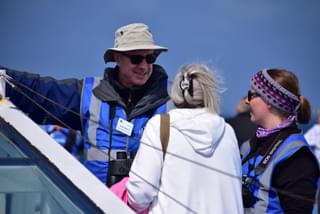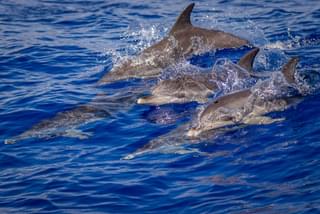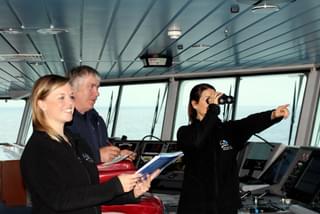Harbour porpoise
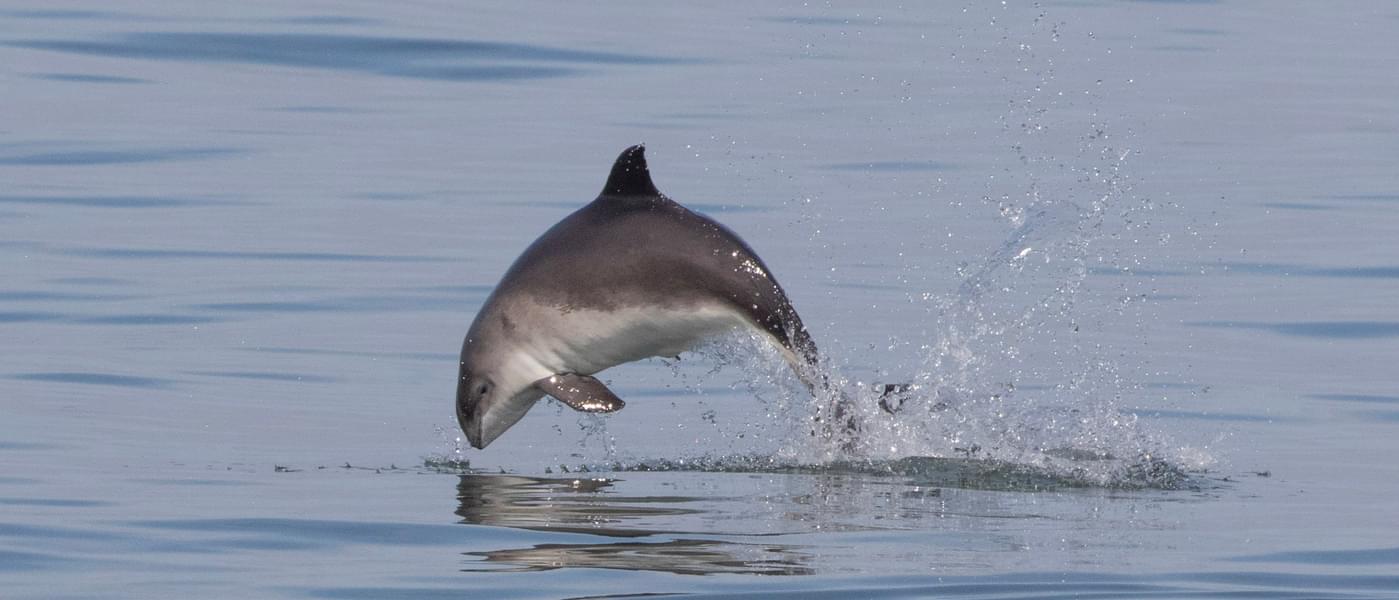
Phocoena phocoena
1.5 - 1.7m
Grey
Teeth
Dorsal fin
The harbour porpoise is the smallest cetacean and the only porpoise to be found in European waters. It has a dark brown to grey colouration on its back and a white belly. Its head is small and round, with no distinct beak. The dorsal fin is also triangular in shape.
Key features:
- Rounded, blunt face - no beak
- Triangular, central dorsal fin
- Grey colouration with dark back and pale underparts
- Fast, rolling surfacing sequence
Behaviour
Harbour porpoises are slow, unobtrusive swimmers and are difficult to see in bad weather due to their size and how they swim. When surfacing the head back and dorsal fin appear together, in a fast-rolling motion - like a turning wheel. They have a high arched back due to their small size. Unlike many of their dolphin relatives, they are shy animals and will avoid vessels where possible, and rarely breach out of the water. They are commonly seen on their own or in groups of 1-6 individuals.
Threats
There have been significant declines in the European population of harbour porpoises over the last 40 years. Due to its preferred habitat of shallow, coastal zones, the harbour porpoise is under threat from high levels of chemical pollution, vessel traffic, underwater noise and the depletion of prey by overfishing. But, the primary threat for the harbour porpoise is the accidental capture in fishing nets.
Distribution
Harbour porpoises are found on the continental shelf in cool temperate to sub-Arctic waters. In September 2016 the Inner Hebrides and Minches was designated a Special Area of Conservation (SAC) this is the largest protected area for harbour porpoises in Europe and supports a population of over 5,000 individuals.
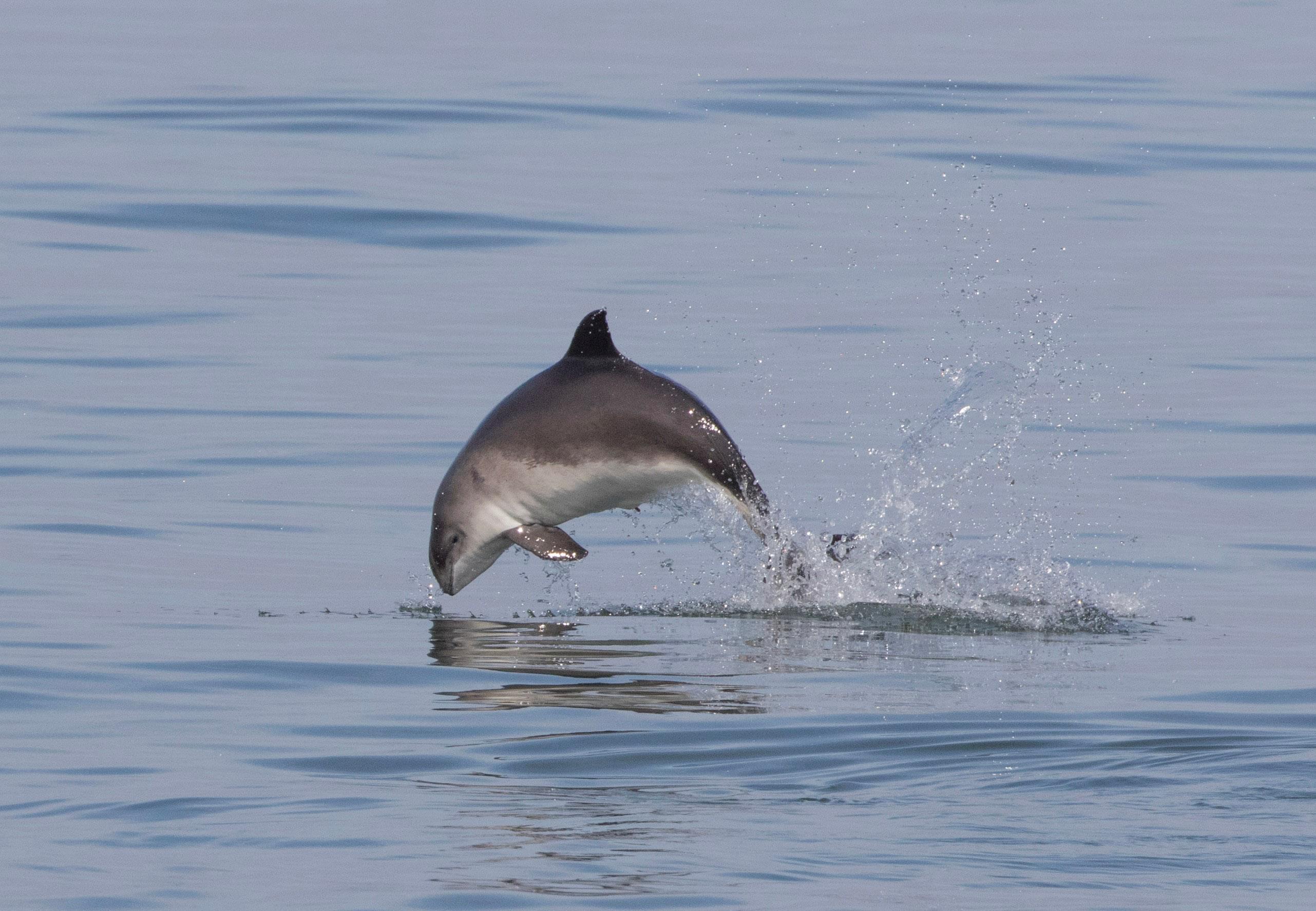
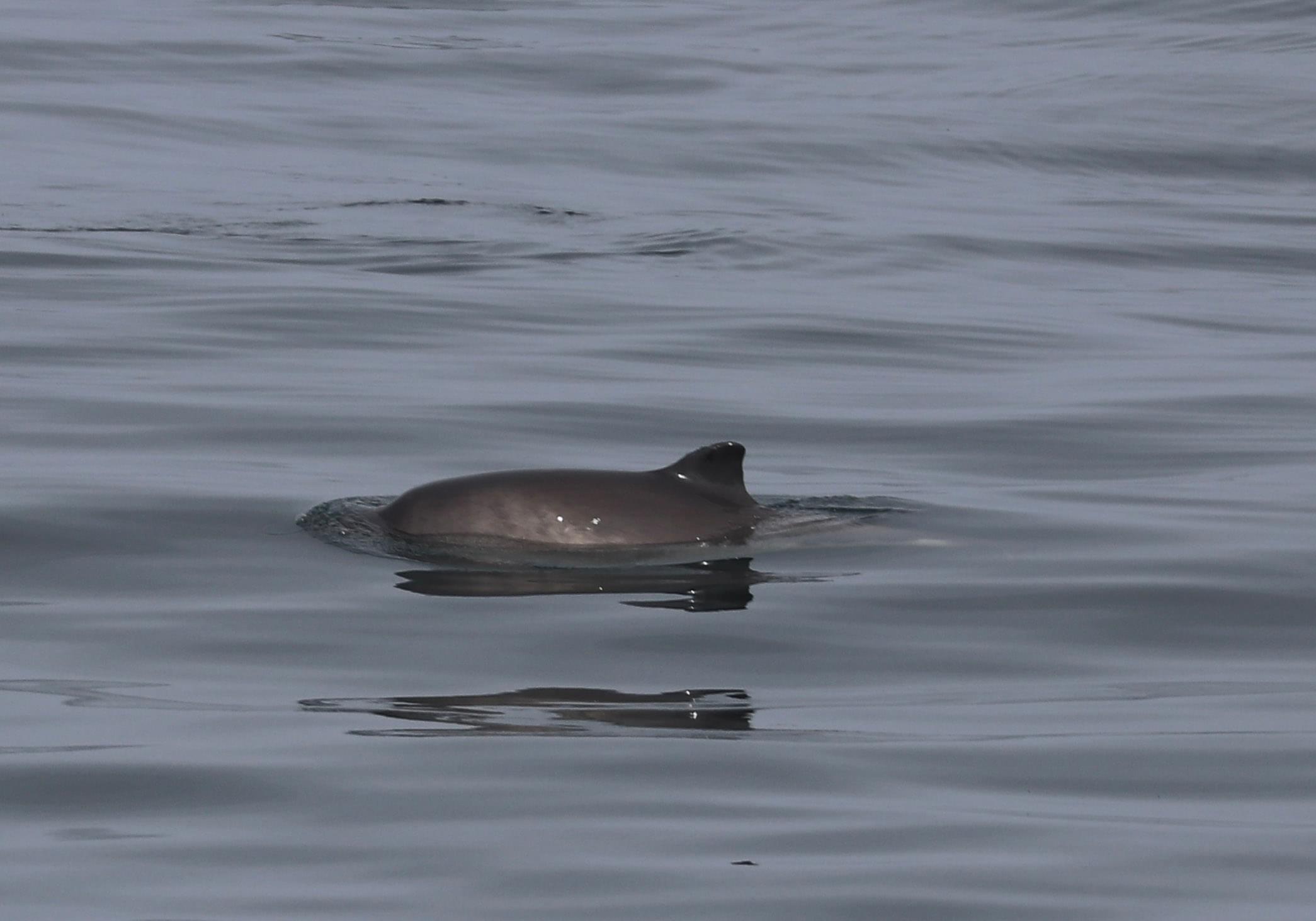
.jpg?q=85&auto=format&fit=clip&dm=1684250342&s=f72583d8af7ba764828311ea2d2c4e9a)
.jpg?q=85&auto=format&fit=clip&dm=1684758998&s=b45e39ba87c716e255b162cb0476bb90)
.jpg?q=85&auto=format&fit=clip&dm=1684759557&s=1bd6c1c356cb434e0472c3a761205664)

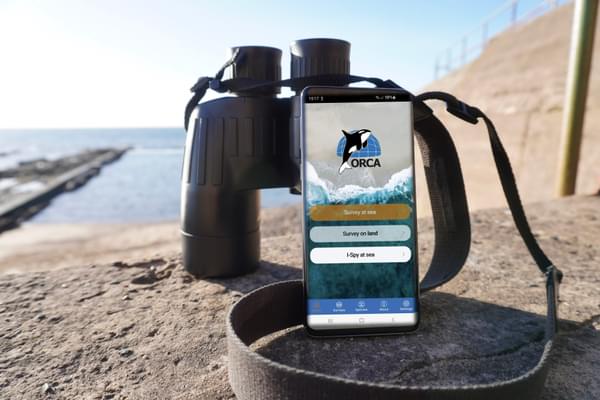
Study whales and dolphins as an ORCA OceanWatcher
The ORCA OceanWatchers online training course, along with a bespoke app, will enable everyone to collect data about whales, dolphins and porpoises. And it can be collected from anywhere that you can see the sea - whether that’s from your local beach, on holiday at the coast, scanning the seas from a cruise ship, travelling via ferry, or from your own boat.
You may also be interested in

